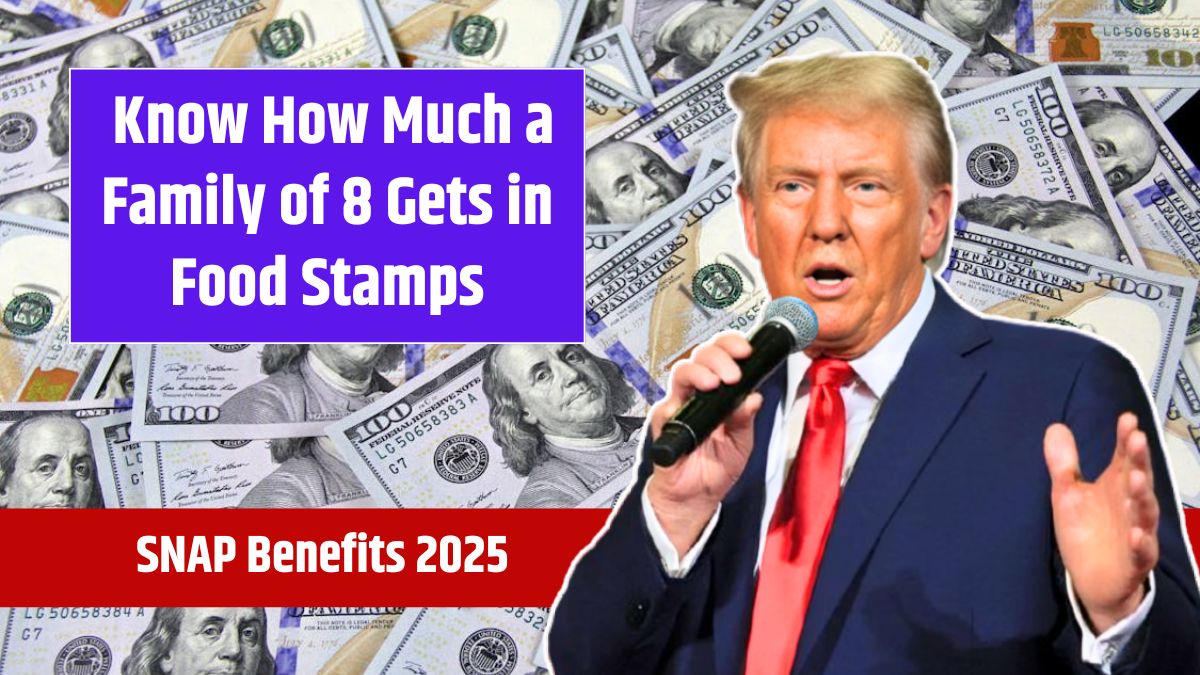The Supplemental Nutrition Assistance Program (SNAP), commonly known as food stamps, is a crucial federal program that helps low-income individuals and families buy food.
More than 42 million Americans rely on SNAP benefits each month, including thousands of residents in Florida. These benefits are distributed through the Electronic Benefits Transfer (EBT) card, which functions like a debit card for purchasing eligible food items.
In Florida, the Department of Children and Families (DCF) manages the SNAP program, ensuring that eligible recipients receive their benefits on time. However, not everyone qualifies, and there are specific requirements that must be met. Let’s break down who is eligible and how the payment schedule works.
Table of Contents
Eligibility
To qualify for SNAP benefits in Florida, applicants must meet certain criteria related to income, residency, and household composition.
Income Limits
SNAP eligibility is based primarily on household income, which must fall below specific limits set by the federal government. The income threshold depends on household size and is updated annually. Here’s a breakdown of the monthly income limits for 2024:
| Household Size | Maximum Gross Monthly Income (130% of FPL) | Maximum Net Monthly Income (100% of FPL) |
|---|---|---|
| 1 | $1,580 | $1,215 |
| 2 | $2,137 | $1,644 |
| 3 | $2,694 | $2,072 |
| 4 | $3,250 | $2,500 |
| 5 | $3,807 | $2,929 |
Households with elderly (60+) or disabled members may have higher income limits and different eligibility rules.
Residency
Applicants must be U.S. citizens or lawful permanent residents and must reside in the state where they apply. Undocumented immigrants are not eligible, though some qualified non-citizens, such as refugees or asylees, may qualify.
Work Requirements
Able-bodied adults between 18 and 49 without dependents (ABAWDs) must work or participate in a work program for at least 20 hours per week to maintain eligibility. Exemptions apply to those with disabilities, pregnant individuals, or primary caregivers of children.
SNAP Benefits
Once approved, recipients receive their benefits through an EBT card, which is loaded monthly. The card can be used at authorized grocery stores, farmers’ markets, and select retailers to purchase eligible food items like:
- Fruits and vegetables
- Meat, poultry, and fish
- Dairy products
- Bread and cereals
- Snacks and non-alcoholic beverages
However, SNAP benefits cannot be used for hot or prepared foods, alcohol, tobacco, pet food, or household items like cleaning supplies. Violating these rules can result in penalties, including benefit suspension.
Payment Schedule
In Florida, SNAP benefits are distributed between the 1st and 28th of each month based on the recipient’s case number. Payments are determined using the 8th and 9th digits (read backward) of the case number, excluding the 10th digit.
Payment Dates
| Case Number (8th & 9th Digits) | Payment Date |
|---|---|
| 32-34 | February 10 |
| 35-38 | February 11 |
| 39-41 | February 12 |
| 42-45 | February 13 |
| 46-48 | February 14 |
| 49-53 | February 15 |
| 54-57 | February 16 |
This staggered payment system ensures smooth processing and prevents delays in fund distribution.
SNAP benefits play a crucial role in reducing food insecurity, allowing low-income individuals and families to access nutritious food. If you believe you qualify, you can apply online through the Florida Department of Children and Families (DCF) website or visit a local office for assistance.
FAQs
Who qualifies for SNAP in Florida?
Low-income individuals who meet income, residency, and work requirements.
How do I apply for SNAP benefits?
Apply online through the Florida DCF website or visit a local office.
What can I buy with SNAP benefits?
You can buy fruits, vegetables, meat, dairy, and other essential food items.
When do I receive my SNAP benefits?
Payments are made between the 1st and 28th based on your case number.
Can I use SNAP for hot food or alcohol?
No, SNAP cannot be used for hot food, alcohol, tobacco, or non-food items.








